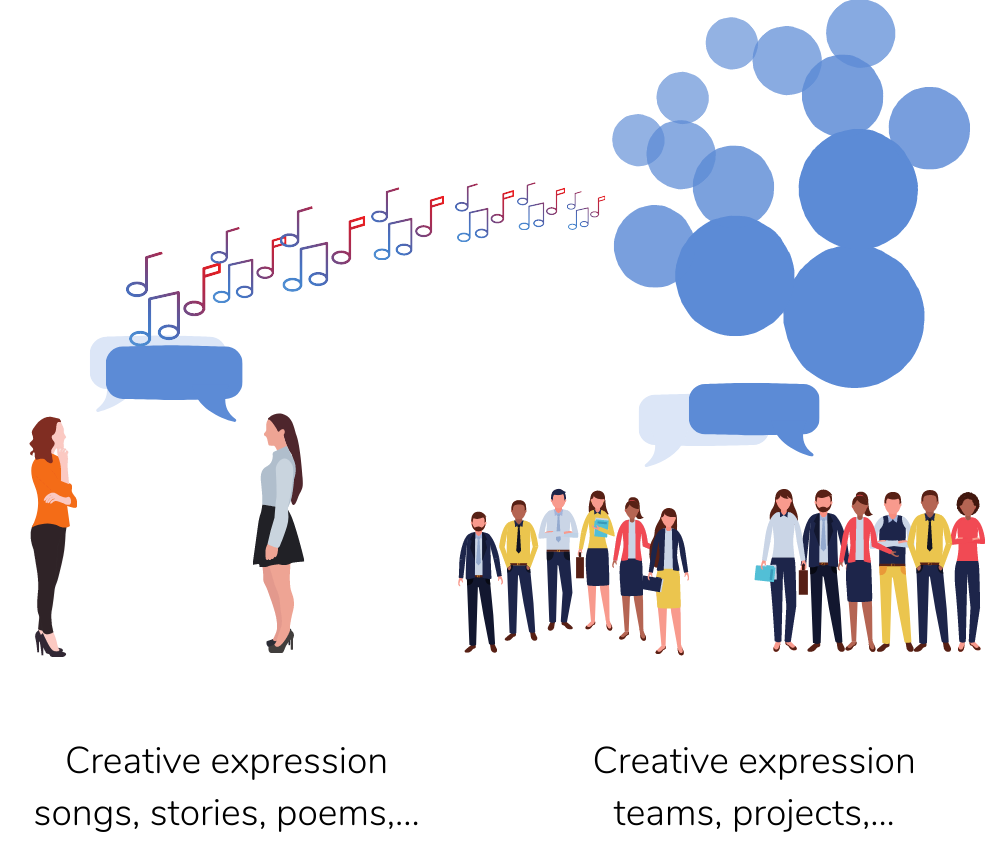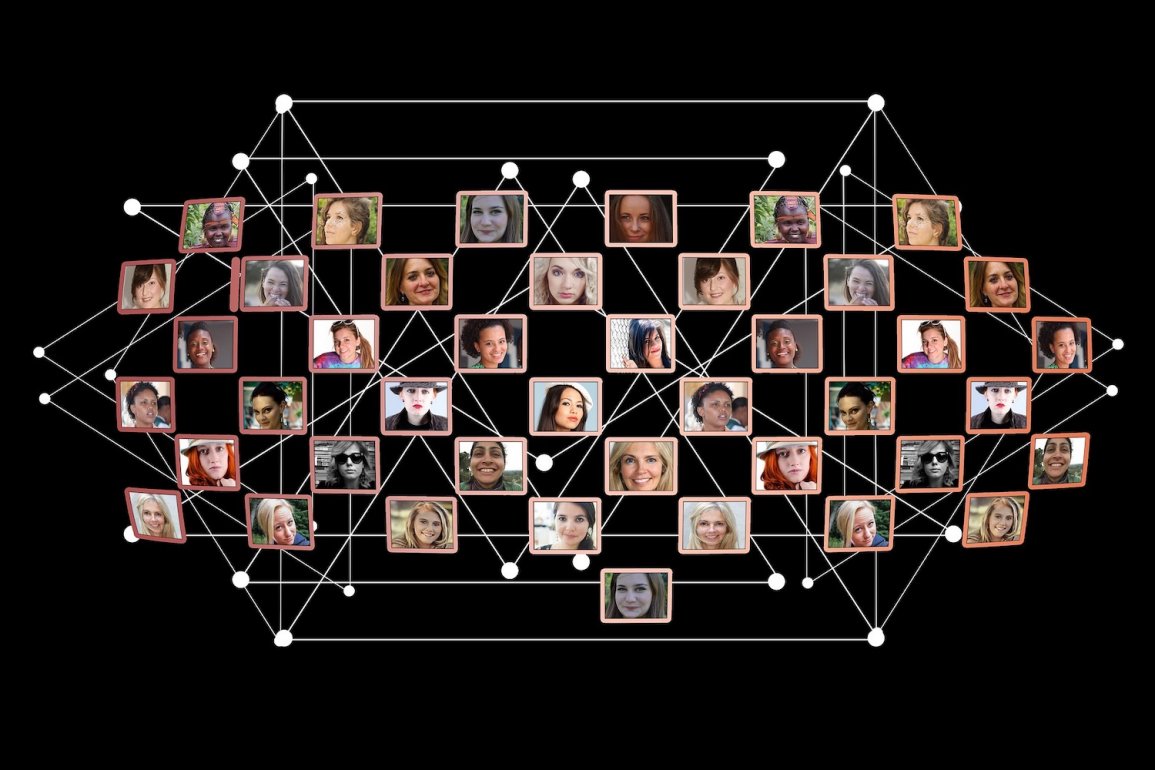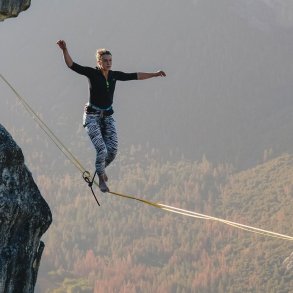By Ted J Rau and originally published as a single article at jenrau.medium.com
What can natural languages teach us about self-governance?
This is Part 1 of a two part article – Part 2 is here.
When two humans talk, they use language to make sense of the world and to connect. Language works in all kinds of ways:
People use language to describe the world around them and align their description of the world. This coat is brown, and I think it’s faux fur.
Words also serve to make requests or utter directives: Wear a hat and gloves!
Sometimes we do things with words, for example when I say I promise to give your hat back — the moment I’m saying this, I am making a promise. Or, by uttering I hereby name you Frank, if authorized, I giving this person a name.
The reason language works is because we’re cooperative when we speak. If I call the same thing cloud today and yuhr tomorrow for no apparent reason, you will not be able to follow what I am saying. If I do that a lot, you will likely stop talking to me. So whenever I am consistent in my words and I speak so I can be understood, I am being cooperative.
Communication is complex. It has always fascinated me that it even works. Connecting through language is deeply human so we’ve become really good at it. What we do struggle with, as a species, is cooperation beyond a handful of people. Because all of a sudden, words aren’t enough. Yelling something ‘into an organization’ or into society doesn’t do much. It’s just words. To make things happen on that larger, more complex scale, you have to speak a whole different kind of language. That language is governance.
Why aren’t words enough? Words without governance really only work to communicate from one author to one reader:
One reader: while an article might reach 1,000s of people, the readers’ brains all read that article separately. You can’t talk to a collective mind that isn’t organized in some way.
One author: while we can write an article as a group, that requires group decision-making, therefore governance. There is no group writing without governance. Language without governance can only handle communications from individuals to (sets of) individuals.
So if words are in the speech bubbles between two people (on the left), governance is in the “speech bubble” between teams, or teams of teams (on the right).

Teams of teams (aka organizations) are like group brains that talk to other group brains. And governance is their language to communicate.
Finding those languages of collaboration or cooperation is at the same time the most urgent, pressing challenge of our time. No matter what we are trying to accomplish — may it be around inequality, climate, food justice — it always includes more than two people. Figuring out collaboration means to figure out how to improve everything else as well.
We as a species have found languages for collaboration, like autocracies and democracies. Children acquire those mental models of power like they acquire language. (And what they are learning is changing.) Governance models feel almost like they fell from the sky. But are they “natural”? That’s hard to determine. I do know they create friction wherever we go because they are bending us out of shape. It’s exhausting. Like being forced to speak a language that isn’t ours… and never will be.
The functions of language
What are the functions of language that also apply to collaboration? There are many models of what language does. I will follow a classic framework and boil it down for this purpose.
1. Words connect
We use language to connect with each other. For example, I might say hi to someone or ping someone, or send a text saying “hey” to our kid, just to check in. In direct communication, language helps us to feel a part of a small group. Words help us have a sense of belonging with people.
This is not enough in large organizations. On the organizational level, it’s purpose and meaning that form the bigger narratives that we identify with. That’s why purpose-driven organizations are all the rage. Purpose is the organizational counterpart to saying “I like you” between humans. It is the expression of affinity between collectives and their organizations.
Governance is both an expression and a manifestation of organizational purpose. We focus on our work in order to fulfil our purpose. We think and talk about our purpose in order to focus on our work.

2. Words align and structure
A lot of what we do with language is referential. We describe things in words.
Let’s go back to the example of me saying “clouds” one day and “yuhr” tomorrow. I say look at those beautiful yuhrs, and all I get is blank stares. I also get blank stares when I say Those at beautiful look clouds. In speaking, I am following patterns — what linguists call syntax. Some orders of words make sense, some don’t. (Depends some on the language, but Universal Grammar constraints across languages.)
So language is not only words, it’s also about how they are packaged and ordered. And how they are packaged and ordered, that’s what makes a language a language.
The packaging of language includes sentences, nouns, verbs, adjectives, conjunctions, syntax rules, phonology, morphology. This packaging of language has its counterpart in the packaging of governance, like teams, roles, workflows, guidelines, connections between teams. (I am not the first one to look at it that way.)
Here are a few examples:
A sentence is a self-contained “thought”. A team is a self-contained cell of collaboration. A role is something more granular, more like a word. There are different kinds of words (parts of speech), just like there are different kinds of roles, like process roles or operational roles. Without that way of packaging operations and relationships, we lose track of the interrelations, as if I handed you a whole bucket of words.
Syntax puts words in order, and workflow designs put actions into order. Without workflow, each task becomes incoherent and ineffective, just like a sentence with a scrambled word order falls apart.
With language, I can make requests, like asking you to wash your hands. That’s what a policy does on an organizational level. (Example: All employees have to wash their hands before returning to work.)
Statements like “I hereby call you husband and husband”, often containing the marker “hereby”, are called performatives in linguistics. That’s what decisions are when we make a group decision to, for example, form a new team. By making the decision, that team now exists!
Group decisions are performative acts of saying “we hereby declare this policy in effect”. Quite abstract but essential!
In linguistics, we use the term Common ground as an imaginary repository of all the statements we have implicitly and mutually agreed to. If I say today My brother called me this morning, and tomorrow I say I don’t have a brother, only sisters, then you will likely object or question my sanity. In linguistic jargon, we’d say my statement was incompatible with the common ground we had established.
A policy manual and meeting minutes create common ground on an organizational level. They contain the information that we mutually agree to be organizational facts.

3. Language unleashes creativity
Many people think children imitate language to learn it but that’s only true at the beginning. Yes, early on, children parrot what they hear. But then, they get the hang of it. They know the pattern, they acquire the specifics and start to use it. First imperfectly, but better and better all the time as they “unlock” more and more patterns to use. They say things they have never heard anyone say. And then they never stop producing and producing sentences!
The power of language comes when we combine the patterns and use them again and again, with a good dash of creativity. In language, I can say
“I see the man who has a dog who is wearing a collar which was made by my uncle who is married to Jane who…”
The nesting of structures is called recursion — think fractals. Children are obsessed with recursion. Many children’s songs use recursive patterns. When I allude to recursive patterns with my 11-year old daughter, she typically giggles, Ted, stop, that tickles in my brain!
Organizations get powerful and creative when they have patterns, and they combine them freely. That’s what a fractal pattern of sociocratic circles (teams) is. A circle forms a circle forms a circle forms a circle forms a circle. Endless possibilities!

Note that recursion only works because there is a pattern. Same with scales in music. Without patterns or constraints, creative expression is just incoherent noise.
Part 2 of this article is here.
Republished with permission.
Some paragraph spacing and Featured Image added by Enlivening Edge Magazine. Featured Image by Gerd Altmann from Pixabay




